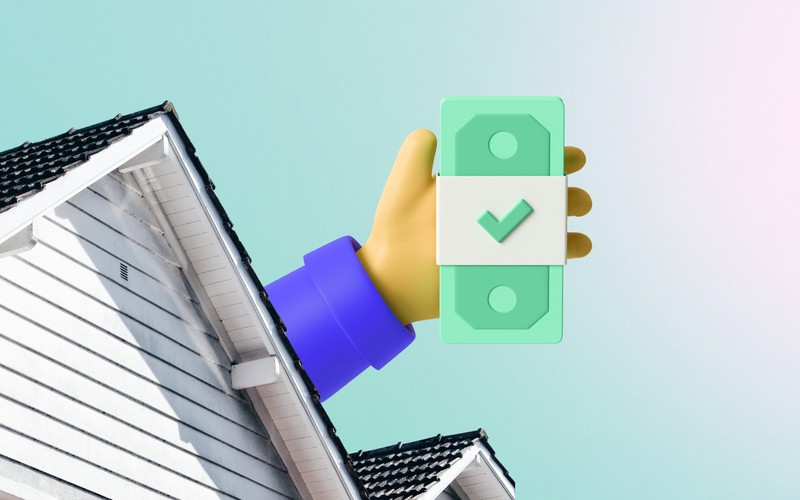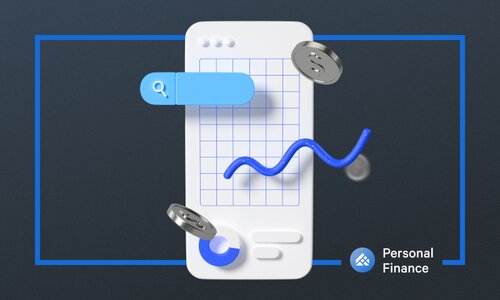Not everyone has the financial capacity to make such a significant upfront payment. This financial hurdle can be particularly daunting for first-time home buyers, individuals with modest household incomes, or those facing various economic challenges. This is where Down Payment Assistance Programs or DPAs can serve a crucial purpose.
What is a down payment assistance program?
Down payment assistance programs are initiatives designed to help individuals and families overcome the financial barrier to making a substantial down payment when purchasing a home or real estate. These first-time homebuyer programs are typically offered by various entities, including government agencies, nonprofit organizations, and private entities, and they aim to increase homeownership opportunities, particularly for those who may face challenges in saving for a down payment.
There are a few goals DPAs are designed to achieve:
- Addressing down payment accessibility: DPAs are tailored initiatives designed to extend financial support to individuals and families who may face difficulties putting together the necessary funds for a down payment, thus broadening the scope of homeownership accessibility.
- Promoting inclusivity: A primary aim of DPAs is to advance inclusivity within the real estate market. These programs frequently focus on underserved communities, including low- to moderate-income households and minority populations.
- Driving economic growth: Homeownership has extensive economic ramifications, with homeowners typically investing in their properties, bolstering neighborhood stability, and actively engaging in community life. Through the facilitation of homeownership, DPAs foster economic expansion at both local and regional levels.
- Encouraging responsible lending: Without alternatives, certain borrowers may resort to riskier home loan options with minimal down payment requirements. DPAs offer safety and affordability, reducing the prevalence of high-risk loans and bolstering financial stability among homeowners.
Types of down payment assistance programs
These programs offer ways to help homebuyers secure their down payment. Here are the common forms in which down payment assistance is provided.
Cash grants
Cash grants are the most common form of down payment assistance and do not require repayment. First-time homeowners can receive an average grant of around $10,000. Some grants may also provide closing cost assistance. Down payment assistance grants often come with certain conditions, such as residing in the home for a specified period or potential partial repayment. The Downpayment Toward Equity Act offers first-time buyers up to $25,000 in cash for down payment and closing costs. If you’re buying your first home, you can apply for a mortgage interest tax credit known as a Mortgage Credit Certificate (MCC).
Forgivable loans
Forgivable loans are interest-free second mortgages that become forgivable after a set number of years, typically around five. Mortgage lenders may extend the forgiveness period up to 15 or 20 years, and no repayment is required on the down payment assistance loans as long as you don’t move before the period is up.
Deferred-payment loans and low-interest loans
Deferred-payment loans are usually interest-free and must be repaid if you move, sell, refinance the primary mortgage, or pay down the first loan. Low-interest loan programs, while requiring repayment, have lower interest rates than conventional loans or fixed-rate first mortgages, leading to lower monthly payments and facilitating quicker repayment.
Matched savings programs
Matched savings programs or Individual Development Accounts (IDAs) match the buyer’s deposit, doubling their savings. Homebuyers deposit their saved down payment into an institution (bank, government agency, or community organization), and the DPA provider matches the amount, creating a larger down payment fund.
What are the eligibility requirements for DPA programs?
Eligibility and qualifying criteria for Down Payment Assistance programs vary widely depending on the specific programs, funding source, and location. Here are some common eligibility criteria:
- First-time homebuyer: Many down payment assistance programs are designed for first-time homebuyers, defined as individuals who have not owned a home in the past three years. However, the definition of first home can vary, so check the specific criteria for each program.
- Income limits: Most programs set income limits to target assistance to individuals and families with moderate to low incomes. The limits vary by household size and geographic area.
- Credit score: While minimum credit score requirements can vary, applicants with better credit scores may have access to more favorable terms and higher loan amounts.
- Home price limits: The programs may establish maximum home purchase price limits to ensure assistance goes to affordable homes for the target population.
- Residency: Some programs may require applicants to be legal residents of the United States or specific states or regions.
- Homebuyer education: Completing a homebuyer education course that provides information on the buying process and financial responsibilities may be a prerequisite for eligibility.
- Property requirements: The purchased property must typically meet specific requirements, such as being a single-family home used as a primary residence and meeting specific safety and habitability standards.
- Loan type: Some down payment assistance programs may be limited to specific types of loans, such as VA loans, FHA loans, USDA loans, or conventional mortgages.
How do down payment assistance programs work?
These programs provide financial support to homebuyers to help cover the upfront costs of purchasing a home, particularly the down payment and sometimes closing costs. Here’s how these programs typically work:
- Application and eligibility: The first step is determining your eligibility for specific programs. Eligibility criteria include income, credit score, homebuyer stats, and residence.
- Program selection: Select a DPA that aligns with your needs and qualifications. Various entities can offer these programs, including government agencies, nonprofits, charities, employers, and more. You may also need to attend homebuyer education courses, provide documentation, and complete the program application.
- Grant or loan offer: Once eligible, you’ll receive an offer from the DPA program, including a grant, forgivable loan, low-interest loan, or a combination. The specific terms and conditions of the assistance are outlined in the offer.
- Home purchase: With DPA funds secured, you can proceed with your home purchase, typically working with a real estate agent and mortgage loan officer.
- Closing process: During the closing, which can take several weeks, the DPA funds are held in escrow. You’ll work with your lender through all the necessary paperwork and financial arrangements.
- Funds distribution: At closing, the DPA funds are distributed to cover the required down payment and, if applicable, closing costs. The funds are disbursed directly to the appropriate parties, such as the seller, titled company, or lender.
- Possession: Once the transaction is complete, you become a homeowner and can take possession of the property. You are now responsible for making mortgage payments and maintaining the home.
- Compliance and conditions: Many DPAs come with certain conditions, such as residency requirements or staying in the home for a specified period. You must adhere to these conditions to retain the DPA benefits.
- Potential repayment: Depending on the type of DPA received, some home buyer programs require repayment if specific conditions are unmet. For example, forgivable loans are forgiven after a certain number of years of occupancy, but if you move earlier, repayment may be required.
Tips for finding and applying for down payment assistance
Applying for down payment assistance can seem daunting and confusing. By following these tips, you can navigate the process more efficiently, increasing your chances of securing the financial support you need.
Finding DPA programs:
- Research DPA programs available in your city, county, or state. Local government websites, housing authorities, housing finance agencies (such as California’s CalHFA), and nonprofit organizations can be good sources of information.
- Websites and databases dedicated to housing assistance programs can help you identify available options in your area. Examples include The U.S. Department of Housing and Urban Development’s (HUD) website and DownPaymentResource.com.
- Housing counselors and real estate professionals often have insights into local DPAs and can guide you to relevant mortgage programs.
Preparing for application:
- Take a close look at your budget and financial situation, including your income, savings, and debts, to determine the level of assistance you need.
- Many DPAs require homebuyer education or counseling. Attend these courses to better understand the home buying process, mortgage rates, mortgage insurance, and other financial responsibilities.
- Improve your credit score, which can lead to more favorable terms and eligibility for certain programs.
- Prepare all necessary financial documents, including tax returns, pay stubs, bank statements, and identification.
Applying for assistance:
- Ensure that your applications are complete and accurate. Missing or incorrect information can delay the approval process.
- Some DPAs have limited funding and operate on a first-come, first-served basis. Apply as early as possible to secure your spot.
- Consider working with a real estate agent or mortgage broker experienced in helping clients access DPAs. They can streamline the process and offer valuable guidance.
- Apply for multiple DPAs if you meet the eligibility criteria. This increases your chances of receiving assistance.
Post-acceptance considerations:
- After receiving DPA approval, ensure you meet all the program requirements, such as residency conditions or home maintenance obligations.
- If you receive a forgivable loan with conditions, have a plan to fulfill those conditions to avoid repayment.
- Understand the potential tax implications of the assistance you receive and consult a tax advisor for guidance on reporting and deductions.
- Stay updated on changes to DPA programs in your area, as eligibility criteria and funding availability can change over time.
Arrived enables you to invest in a diversified portfolio of residential properties across different markets without the challenges and financial commitment of purchasing and maintaining a single property.
The opinions expressed in this article are for general informational purposes only and are not intended to provide specific advice or recommendations for any individual or on any specific security or investment product. The views reflected in the commentary are subject to change at any time without notice. View Arrived’s disclaimers.








